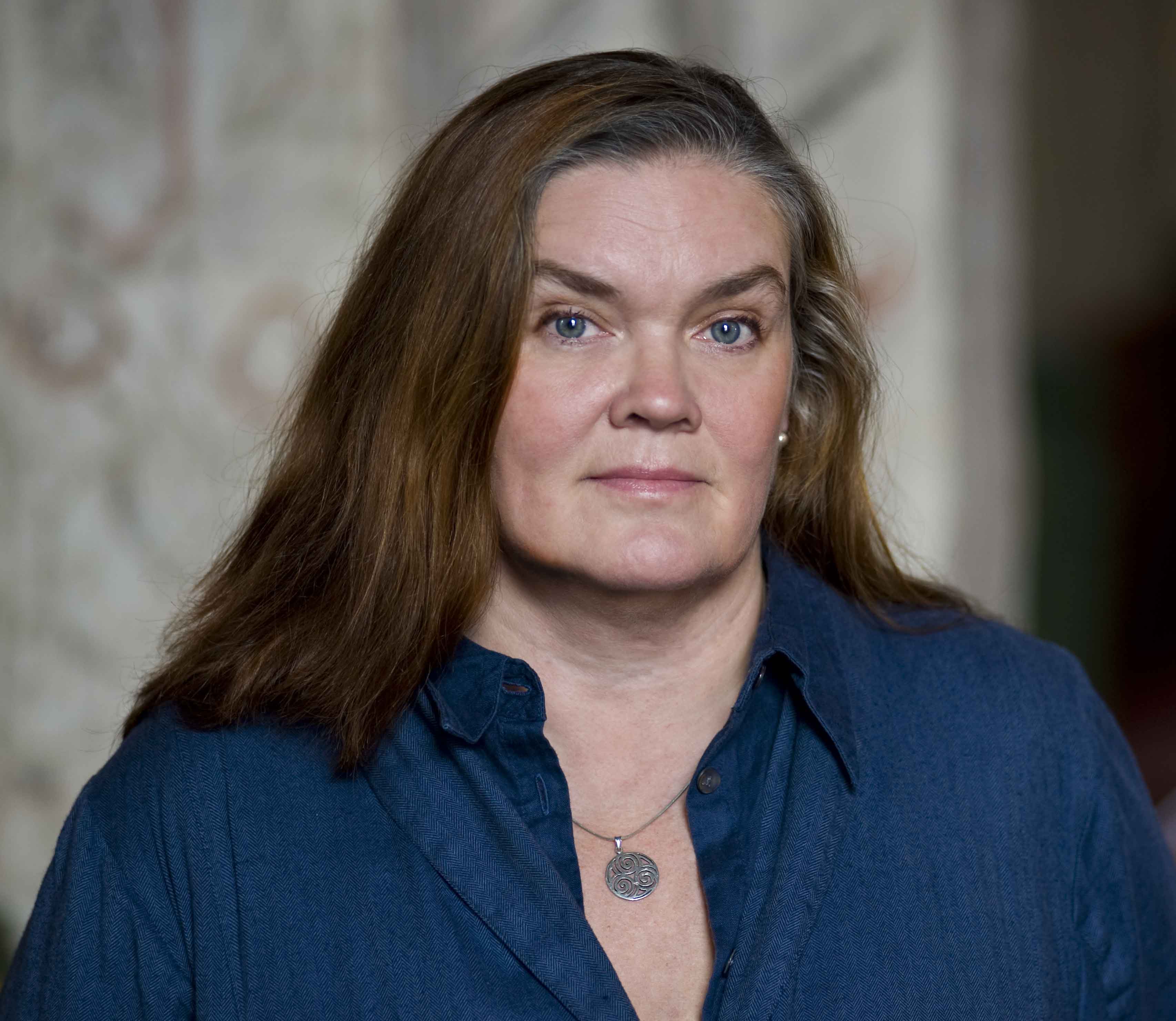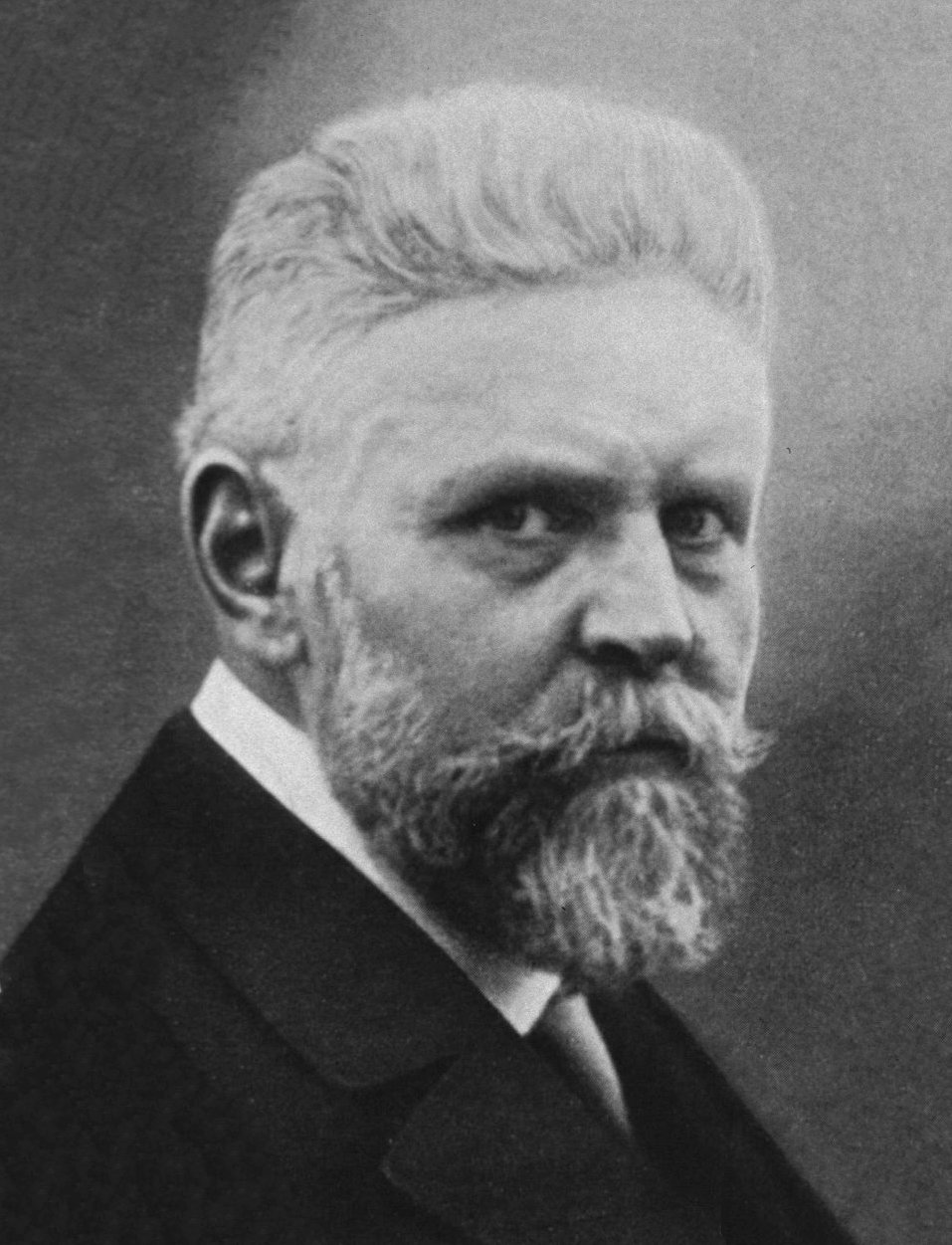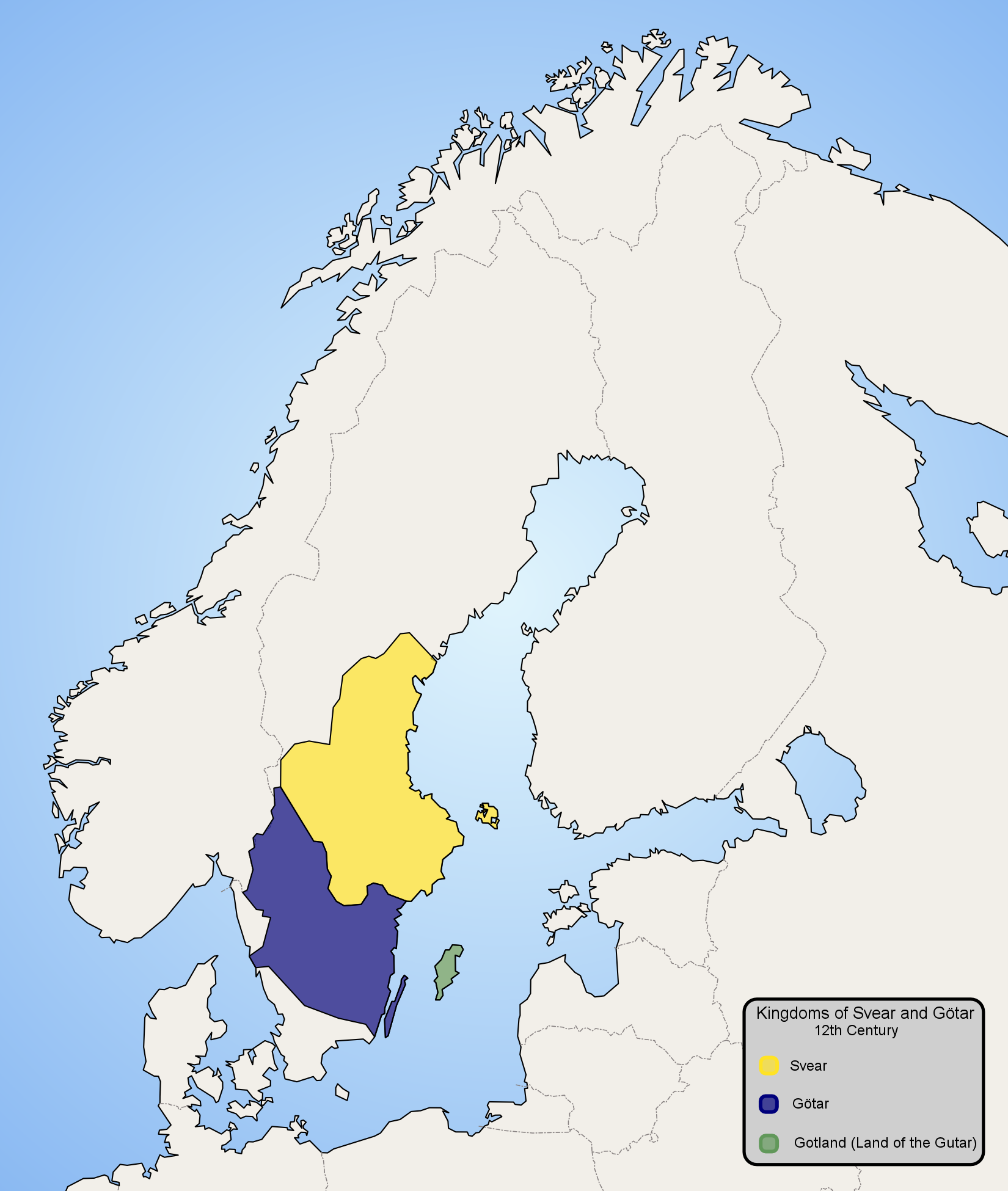|
Maja Hagerman
Maja Anna Maria Hagerman (born 3 February 1960) is a Swedish author, journalist and filmmaker. As senior lecturer in arts she teaches historical documentary filmmaking at Dalarna university. Hagerman has published six books on Swedish history, early medieval and prehistoric times as well as modern history and essays on cultural heritage and memory. She has made several historical documentaries for Sveriges Television. She is an honorary doctor at the Faculty of History and Philosophy at Uppsala University, promoted in 2012. Hagerman made her debut with the book ''Spåren av kungens män. Om när Sverige blev ett kristet rike'', on the making of the Swedish kingdom and its conversion to Christianity. The book won the August prize for non-fiction in 1996. In September 2015, Hagerman released the book ''Käraste Herman. Rasbiolog Herman Lundborgs gåta'', on the physician and professor Herman Lundborg. He headed the world's first state racial biology institute in Uppsala, Sweden, ... [...More Info...] [...Related Items...] OR: [Wikipedia] [Google] [Baidu] |
Maja Klar-webb-liten-1394
Maja can refer to: Places * Maja, Croatia, a village * Maja, Banten, a subdistrict in Lebak Regency, Banten, Indonesia ** Maja railway station * Maja, West Java, a subdistrict in Majalengka Regency, West Java, Indonesia * Maja River, a tributary of the Angke River, Jakarta, Indonesia * Maja (peak), a mountain peak in Kosovo * Maja (river), a river in Romania * Mája, the Hungarian name for Maia village, Bereni Commune, Mureș County, Romania * 66 Maja, a main-belt asteroid People * Maja (given name), a feminine given name * Charles Maja (1966–2020), South African actor * Josh Maja (born 1998), English footballer * Otto Maja (born 1987), Finnish street artist * Maja, the feminine form of majo, a low-class Spaniard of the 18th and 19th century Animals * Maja (boa constrictor), a species in the Cuban cactus scrub * ''Maja'' (crab), a genus of crabs in the family Majidae See also * Maia (other) * ''La maja desnuda'', a painting by Spanish artist Francisco Goya * '' ... [...More Info...] [...Related Items...] OR: [Wikipedia] [Google] [Baidu] |
Sweden
Sweden, ; fi, Ruotsi; fit, Ruotti; se, Ruoŧŧa; smj, Svierik; sje, Sverji; sju, Sverje; sma, Sveerje or ; yi, שוועדן, Shvedn; rmu, Svedikko; rmf, Sveittiko. formally the Kingdom of Sweden, is a Nordic countries, Nordic country located on the Scandinavian Peninsula in Northern Europe. It borders Norway to the west and north, and Finland to the east. At , Sweden is the largest Nordic country and the List of European countries by area, fifth-largest country in Europe. The Capital city, capital and largest city is Stockholm. Sweden has a population of 10.5 million, and a low population density of ; around 87% of Swedes reside in urban areas in the central and southern half of the country. Sweden’s urban areas together cover 1.5% of its land area. Because the country is so long, ranging from 55th parallel north, 55°N to 69th parallel north, 69°N, the climate of Sweden is diverse. Sweden has been inhabited since Prehistoric Sweden, prehistoric times, . T ... [...More Info...] [...Related Items...] OR: [Wikipedia] [Google] [Baidu] |
Medieval
In the history of Europe, the Middle Ages or medieval period lasted approximately from the late 5th to the late 15th centuries, similar to the post-classical period of global history. It began with the fall of the Western Roman Empire and transitioned into the Renaissance and the Age of Discovery. The Middle Ages is the middle period of the three traditional divisions of Western history: classical antiquity, the medieval period, and the modern period. The medieval period is itself subdivided into the Early, High, and Late Middle Ages. Population decline, counterurbanisation, the collapse of centralized authority, invasions, and mass migrations of tribes, which had begun in late antiquity, continued into the Early Middle Ages. The large-scale movements of the Migration Period, including various Germanic peoples, formed new kingdoms in what remained of the Western Roman Empire. In the 7th century, North Africa and the Middle East—most recently part of the Eastern Roman ... [...More Info...] [...Related Items...] OR: [Wikipedia] [Google] [Baidu] |
Prehistoric
Prehistory, also known as pre-literary history, is the period of human history between the use of the first stone tools by hominins 3.3 million years ago and the beginning of recorded history with the invention of writing systems. The use of symbols, marks, and images appears very early among humans, but the earliest known writing systems appeared 5000 years ago. It took thousands of years for writing systems to be widely adopted, with writing spreading to almost all cultures by the 19th century. The end of prehistory therefore came at very different times in different places, and the term is less often used in discussing societies where prehistory ended relatively recently. In the early Bronze Age, Sumer in Mesopotamia, the Indus Valley Civilisation, and ancient Egypt were the first civilizations to develop their own scripts and to keep historical records, with their neighbors following. Most other civilizations reached the end of prehistory during the following Iron Ag ... [...More Info...] [...Related Items...] OR: [Wikipedia] [Google] [Baidu] |
Sveriges Television
Sveriges Television AB ("Sweden's Television Stock Company"), shortened to SVT (), is the Swedish national public television broadcaster, funded by a public service tax on personal income set by the Riksdag (national parliament). Prior to 2019, SVT was funded by a television licence fee payable by all owners of television sets. The Swedish public broadcasting system is largely modelled after the system used in the United Kingdom, and Sveriges Television shares many traits with its British counterpart, the BBC. SVT is a public limited company that can be described as a quasi-autonomous non-government organisation. Together with the other two public broadcasters, Sveriges Radio and Sveriges Utbildningsradio, it is owned by an independent foundation, '' Förvaltningsstiftelsen för Sveriges Radio AB, Sveriges Television AB och Sveriges Utbildningsradio AB''. The foundation's board consists of 13 politicians, representing the political parties in the Riksdag and appointed by t ... [...More Info...] [...Related Items...] OR: [Wikipedia] [Google] [Baidu] |
Uppsala University
Uppsala University ( sv, Uppsala universitet) is a public research university in Uppsala, Sweden. Founded in 1477, it is the oldest university in Sweden and the Nordic countries still in operation. The university rose to significance during the rise of Sweden as a great power at the end of the 16th century and was then given a relative financial stability with a large donation from King Gustavus Adolphus in the early 17th century. Uppsala also has an important historical place in Swedish national culture, identity and for the Swedish establishment: in historiography, literature, politics, and music. Many aspects of Swedish academic culture in general, such as the white student cap, originated in Uppsala. It shares some peculiarities, such as the student nation system, with Lund University and the University of Helsinki. Uppsala belongs to the Coimbra Group of European universities and to the Guild of European Research-Intensive Universities. It has ranked among the wo ... [...More Info...] [...Related Items...] OR: [Wikipedia] [Google] [Baidu] |
Herman Lundborg
Herman Bernhard Lundborg (April 7, 1868 in Väse in Värmland, Sweden – May 9, 1943 in Östhammar in Uppland, Sweden) was a Swedish physician and a race biologist. Biography He graduated in medicine at the Karolinska Institutet in 1895, and received his doctorate at the Uppsala University in 1903. He also habilitated there that year for psychiatry and neurology, and in 1915 for racial research and racial biology. For his doctoral dissertation, Lundborg researched one of the genetic progressive myoclonus epilepsies first described by Heinrich Unverricht in 1891. Besides giving an account of the disease, he traced an affected family back to the 18th century, an analysis unique for that time. He concluded that the family had genetically degenerated because of "unwise marriages". The study has been described as "of considerable historic interest in human genetics". Over the years, the form of epilepsy became known as the Unverricht–Lundborg disease. He was on the editorial b ... [...More Info...] [...Related Items...] OR: [Wikipedia] [Google] [Baidu] |
Uppsala, Sweden
Uppsala (, or all ending in , ; archaically spelled ''Upsala'') is the county seat of Uppsala County and the fourth-largest city in Sweden, after Stockholm, Gothenburg, and Malmö. It had 177,074 inhabitants in 2019. Located north of the capital Stockholm it is also the seat of Uppsala Municipality. Since 1164, Uppsala has been the ecclesiastical centre of Sweden, being the seat of the Archbishop of the Church of Sweden. Uppsala is home to Scandinavia's largest cathedral – Uppsala Cathedral, which was the frequent site of the coronation of the Swedish monarch until the late 19th century. Uppsala Castle, built by King Gustav Vasa, served as one of the royal residences of the Swedish monarchs, and was expanded several times over its history, making Uppsala the secondary capital of Sweden during its greatest extent. Today it serves as the residence of the Governor of Uppsala County. Founded in 1477, Uppsala University is the oldest centre of higher education in Scandin ... [...More Info...] [...Related Items...] OR: [Wikipedia] [Google] [Baidu] |
Racial Hygiene
The term racial hygiene was used to describe an approach to eugenics in the early 20th century, which found its most extensive implementation in Nazi Germany (Nazi eugenics). It was marked by efforts to avoid miscegenation, analogous to an animal breeder seeking purebred animals. This was often motivated by the belief in the existence of a racial hierarchy and the related fear that "lower races" would "contaminate" a "higher" one. As with most eugenicists at the time, racial hygienists believed that the lack of eugenics would lead to rapid social degeneration, the decline of civilization by the spread of inferior characteristics. Development The German eugenicist Alfred Ploetz introduced the term "racial hygiene" (') in 1895 in his ''Racial Hygiene Basics'' ('). He discussed the importance of avoiding "counterselective forces" such as war, inbreeding, free healthcare for the poor, alcohol and venereal disease. In its earliest incarnation it was more concerned by the declining b ... [...More Info...] [...Related Items...] OR: [Wikipedia] [Google] [Baidu] |
Sámi
The Sámi ( ; also spelled Sami or Saami) are a Finno-Ugric-speaking people inhabiting the region of Sápmi (formerly known as Lapland), which today encompasses large northern parts of Norway, Sweden, Finland, and of the Murmansk Oblast, Russia, most of the Kola Peninsula in particular. The Sámi have historically been known in English as Lapps or Laplanders, but these terms are regarded as offensive by the Sámi, who prefer the area's name in their own languages, e.g. Northern Sámi . Their traditional languages are the Sámi languages, which are classified as a branch of the Uralic language family. Traditionally, the Sámi have pursued a variety of livelihoods, including coastal fishing, fur trapping, and sheep herding. Their best-known means of livelihood is semi-nomadic reindeer herding. about 10% of the Sámi were connected to reindeer herding, which provides them with meat, fur, and transportation; around 2,800 Sámi people were actively involved in reindeer her ... [...More Info...] [...Related Items...] OR: [Wikipedia] [Google] [Baidu] |
Finns
Finns or Finnish people ( fi, suomalaiset, ) are a Baltic Finnic ethnic group native to Finland. Finns are traditionally divided into smaller regional groups that span several countries adjacent to Finland, both those who are native to these countries as well as those who have resettled. Some of these may be classified as separate ethnic groups, rather than subgroups of Finns. These include the Kvens and Forest Finns in Norway, the Tornedalians in Sweden, and the Ingrian Finns in Russia. Finnish, the language spoken by Finns, is closely related to other Balto-Finnic languages, e.g. Estonian and Karelian. The Finnic languages are a subgroup of the larger Uralic family of languages, which also includes Hungarian. These languages are markedly different from most other languages spoken in Europe, which belong to the Indo-European family of languages. Native Finns can also be divided according to dialect into subgroups sometimes called '' heimo'' (lit. ''tribe''), although ... [...More Info...] [...Related Items...] OR: [Wikipedia] [Google] [Baidu] |
Swedes
Swedes ( sv, svenskar) are a North Germanic ethnic group native to the Nordic region, primarily their nation state of Sweden, who share a common ancestry, culture, history and language. They mostly inhabit Sweden and the other Nordic countries, in particular Finland where they are an officially recognized minority, with a substantial diaspora in other countries, especially the United States. Etymology The English term "Swede" has been attested in English since the late 16th century and is of Middle Dutch or Middle Low German origin. In Swedish, the term is ''svensk'', which is from the name of ''svear'' (or Swedes), the people who inhabited Svealand in eastern central Sweden, and were listed as ''Suiones'' in Tacitus' history ''Germania'' from the first century AD. The term is believed to have been derived from the Proto-Indo-European reflexive pronominal root, , as the Latin ''suus''. The word must have meant "one's own (tribesmen)". The same root and original meanin ... [...More Info...] [...Related Items...] OR: [Wikipedia] [Google] [Baidu] |





.jpg)


